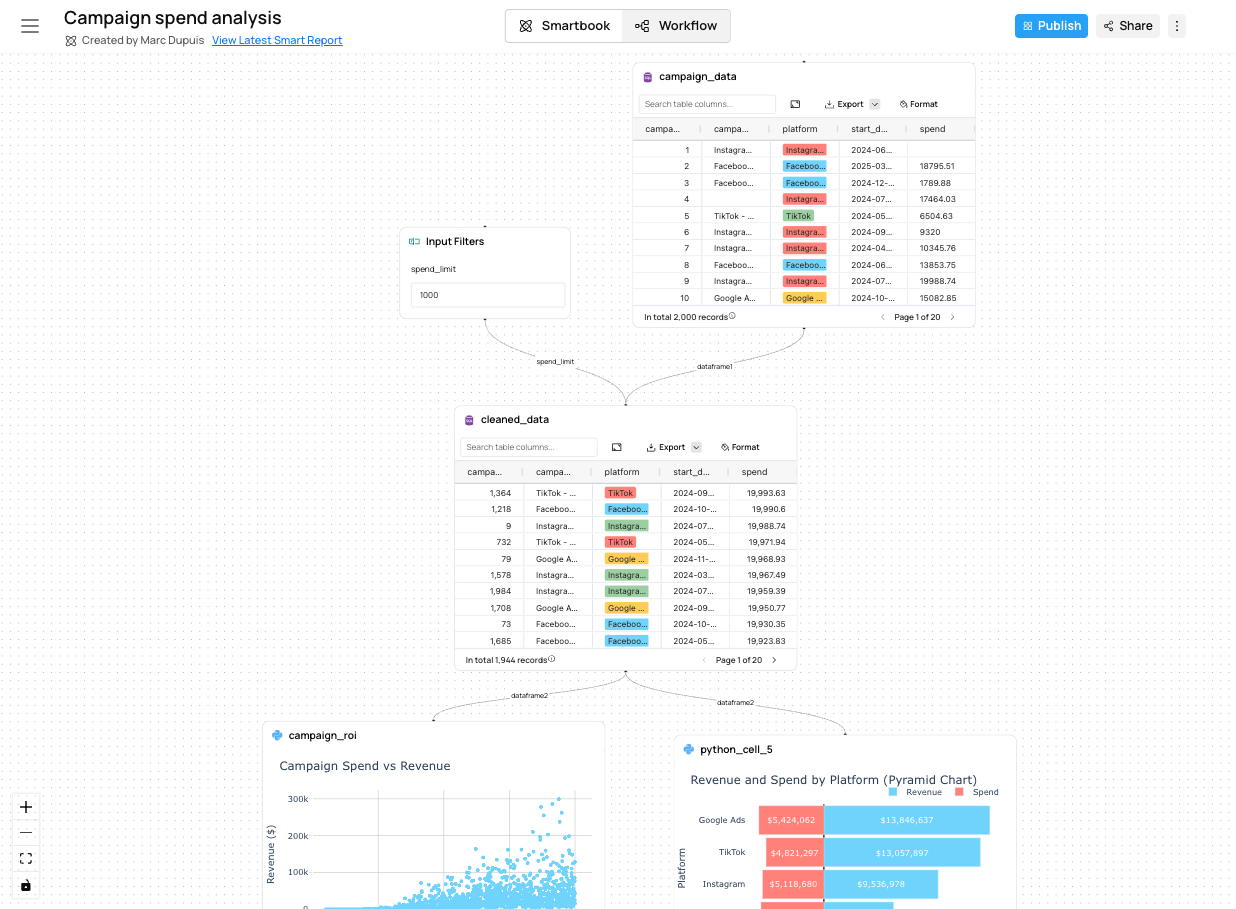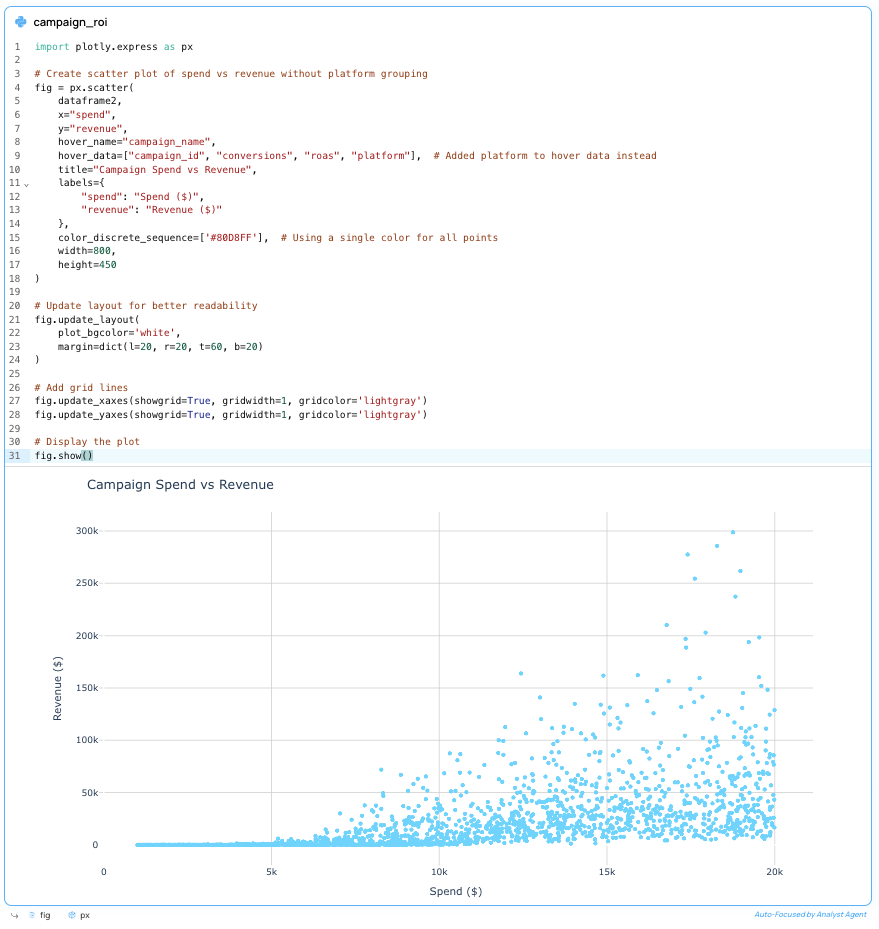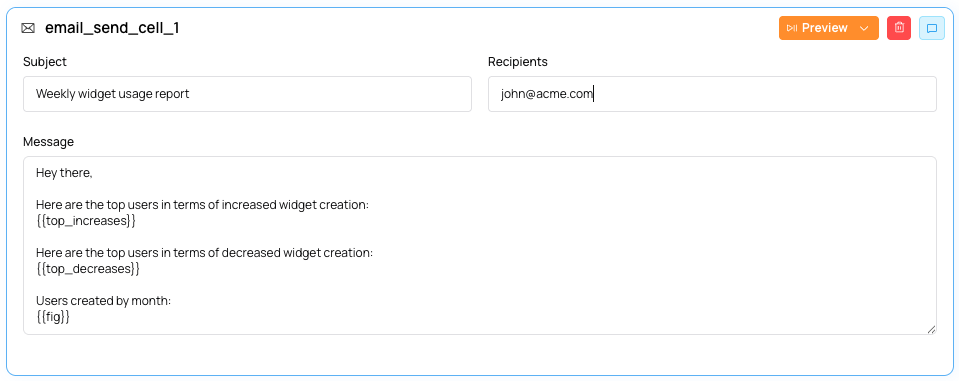Automate AI data workflows
The power of Fabi.ai doesn’t just lie in your ability to conduct advanced data analysis and build dashboards incredibly fast. We also offer the most powerful way to build and automate data analysis and data science pipelines. Here are some of the things you can do with our AI workflow automation:- Schedule and process data from SQL databases or Google Sheets using Python and AI
- Send dynamic, context-relevant insights to Slack
- Automate data cleaning with SQL, Python and AI

Fabi.ai workflows 101
Cells (nodes)
The concept of cells and nodes are interchangeable. A cell is simply a building block in your workflow, and a Smartbook for that matter. Some of our most popular cells include:- Python
- SQL
- AI summarization
- AI enrichment
- Push to Google Sheets
- Pull from Google Sheets
- Send to Slack
- Send to email

- Pull data from a source (examples: SQL, Google Sheets)
- Process data (examples: SQL, Python, AI agent)
- Send data to a destination (examples: Google Sheets, Email, Slack)
Edges
Cells are connected using Python variables and objects. Let’s take a simple example. Say you want to pull data using SQL and process it using Python.- Create a SQL cell and query your data. Your data will automatically be stored in a DataFrame with the name displayed at the bottom of the cell
- Create a Python cell that references that DataFrame. This automatically connects those two cells and creates an Edges
Important: In Python cells you can simply refers to variables and objects directly using the name of the variable or object. In all other cells you need to indicate that these are variables using
{{your_variable_name}}.